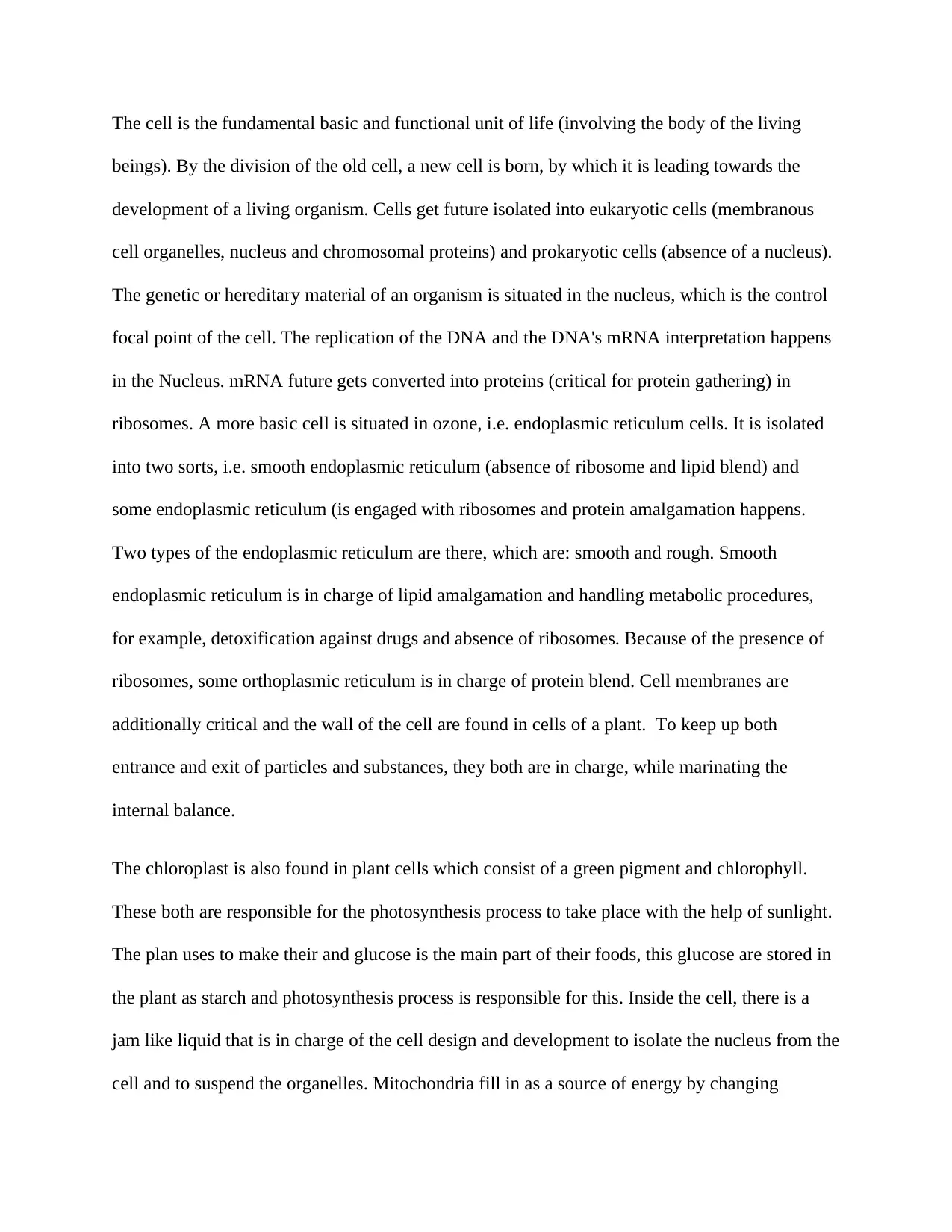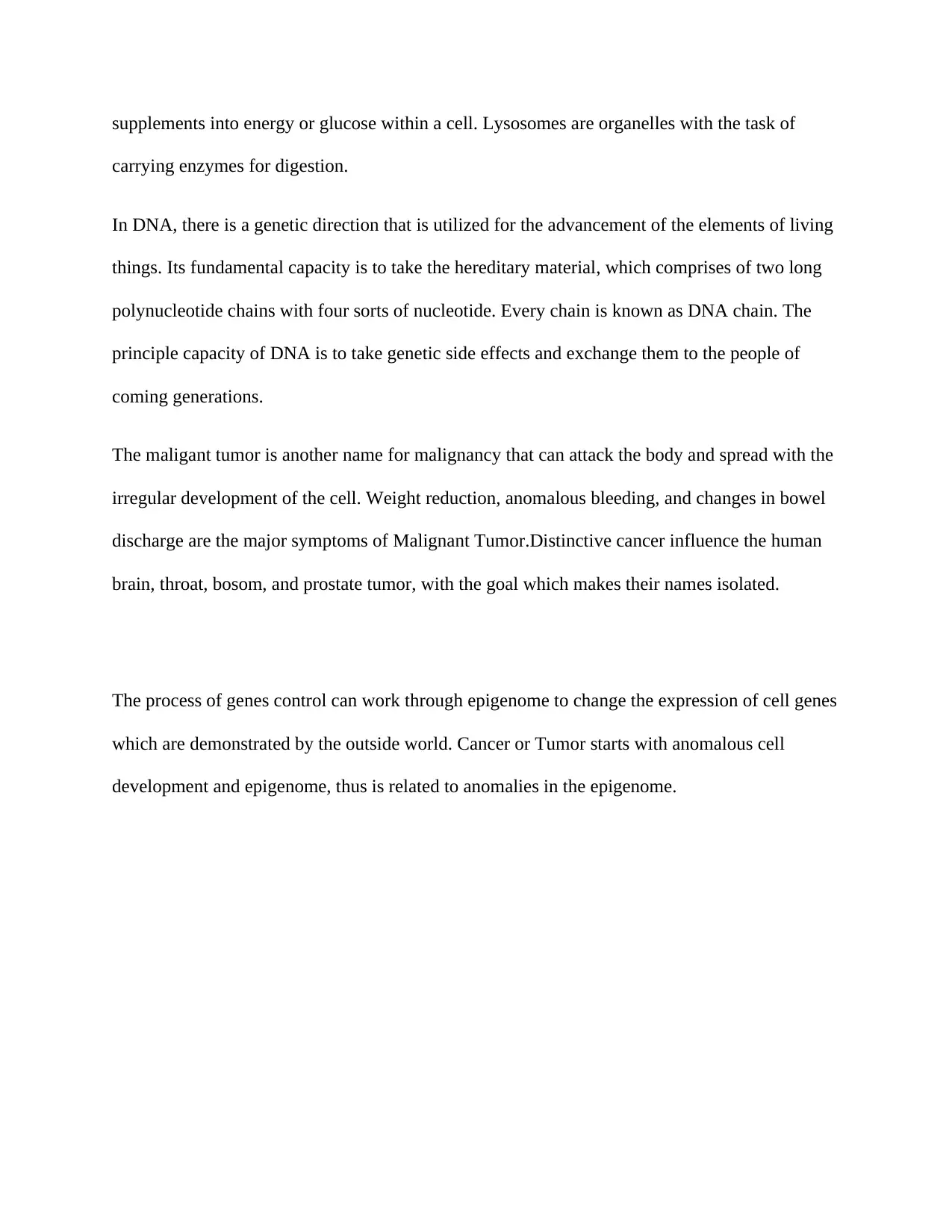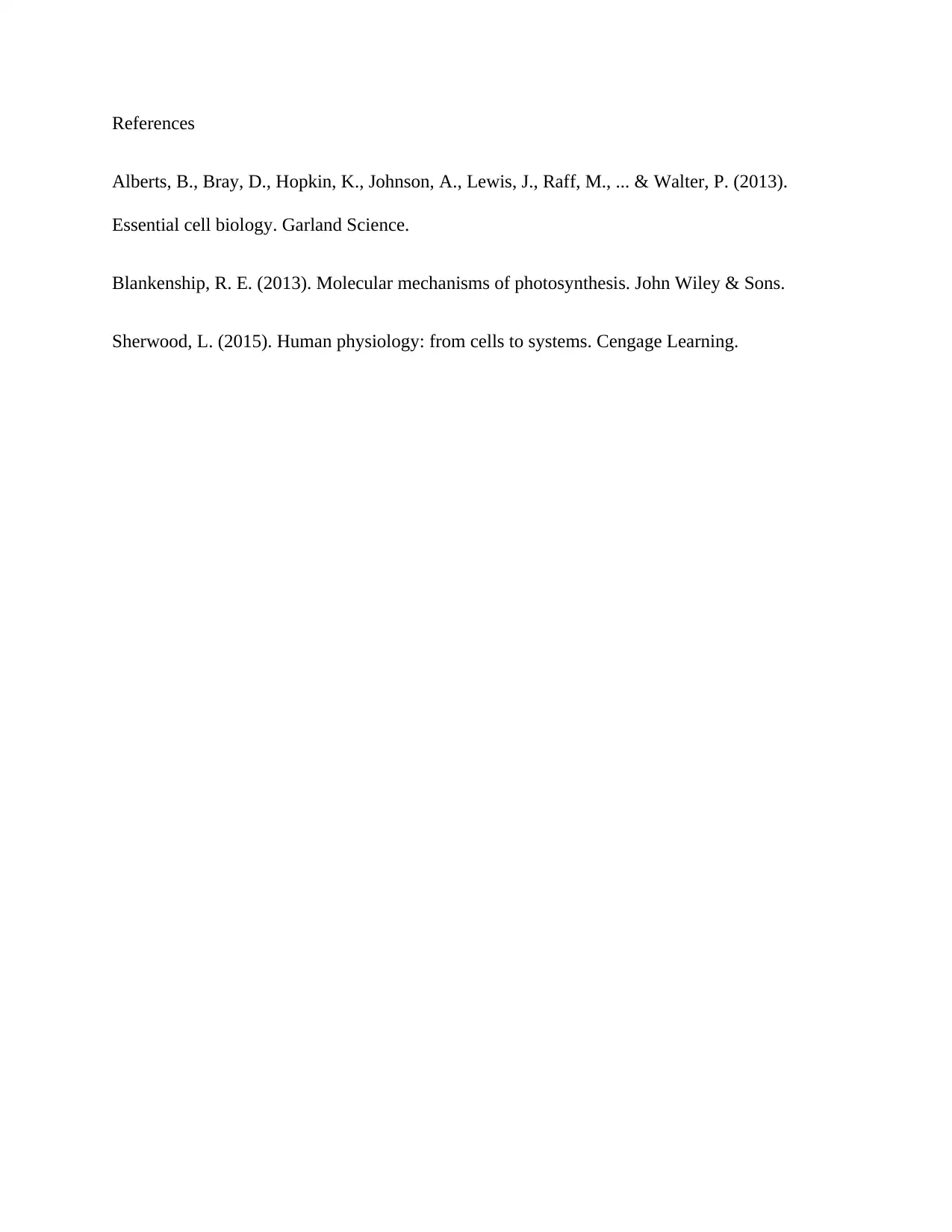Detailed Report on Cell Biology: Structure, Processes, and Cancer
VerifiedAdded on 2019/09/19
|4
|689
|377
Report
AI Summary
This report delves into the fundamental aspects of cell biology, exploring the intricate structure and diverse functions of cells. It details the eukaryotic cell, emphasizing the nucleus and its role in housing genetic material and the processes of DNA replication and mRNA transcription. The report also examines the endoplasmic reticulum, differentiating between smooth and rough types, and their respective roles in lipid synthesis and protein production. Furthermore, it highlights the significance of cell membranes, chloroplasts (in plant cells), mitochondria, and lysosomes in maintaining cellular homeostasis, facilitating photosynthesis, generating energy, and enabling digestion, respectively. The report also discusses DNA's role in carrying genetic information and the malignant tumor (cancer) and its symptoms. The process of genes control can work through epigenome to change the expression of cell genes which are demonstrated by the outside world.
1 out of 4











![[object Object]](/_next/static/media/star-bottom.7253800d.svg)